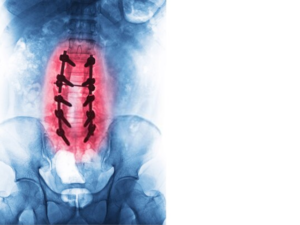Laminectomy
Laminectomy In Iran
Best laminectomy hospital in Iran
 A large number of Iranian and foreign patients are going under laminectomy in Iran each month. laminectomy in Iran is on top of the middle-east regarding its skilled specialists and surgeons.
A large number of Iranian and foreign patients are going under laminectomy in Iran each month. laminectomy in Iran is on top of the middle-east regarding its skilled specialists and surgeons.
Here are the best hospitals for laminectomy in Iran:
- Treata Professional Hospital
- Gandi Hospital
- Moheb Mehr Hospital
Laminectomy cost in Iran
There is a significant difference between the cost of laminectomy in Iran and other countries. The most important factors for the low price of it in Iran are:
- A large number of laminectomy hospitals in Iran.
- A large number of applicants for laminectomy in Iran.
laminectomy cost in Iran varies depending on the laminectomy and the hospital. An average cost of laminectomy in Iran is $
Laminectomy cost in Iran in comparison with other countries
This surgery costs $ in the U.S., $ in Europe, $ in Thailand and $ in Turkey.
Best laminectomy surgeon in Iran
A lot of orthopaedic surgeries are being performed each year in Iran. Experienced Iranian doctors with an excellent record are performing the operations. One of the most important factors for choosing a good surgeon for laminectomy in Iran is a doctor has done many laminectomy surgeries.
You can find the best doctors for laminectomy in Iran on our website by following their different experiences.
Why should you travel to Iran for a laminectomy?
Many patients travel to Iran for laminectomy. One of the reasons for this matter is Iranian specialists and surgeons who have high surgery success rates.
- Low cost of laminectomy in Iran
- Low cost of accommodation in Iran
- Well experienced doctors
- The high number of laminectomy in Iran
Laminectomy centres accordant with today's European standards are performing the highest quality operations in Iran. Another reason for laminectomy in Iran is its lower cost compared to other countries.
How long should I stay for laminectomy in Iran?
About Laminectomy
 Lamina is a bone from the vertebrae and forms a layer to protect the spinal cord. Pressure on the spinal cord or nerve roots can be due to 2 main reasons Disk herniation, Stenosis, the narrowing of the spinal canal due to the degenerative changes that occur with ageing, a tumour in the spine, arthritis of the spine and a congenital defect. It is done when the pain is accompanied by symptoms of nerve damage, such as numbness or weakness in the arms or legs. Loss of bowel or bladder control from pressure in the cervical or lumbar spine also usually needs surgery.
Lamina is a bone from the vertebrae and forms a layer to protect the spinal cord. Pressure on the spinal cord or nerve roots can be due to 2 main reasons Disk herniation, Stenosis, the narrowing of the spinal canal due to the degenerative changes that occur with ageing, a tumour in the spine, arthritis of the spine and a congenital defect. It is done when the pain is accompanied by symptoms of nerve damage, such as numbness or weakness in the arms or legs. Loss of bowel or bladder control from pressure in the cervical or lumbar spine also usually needs surgery.
Recommended for
- Patients with persistent numbness or weakness in the arms or legs
- Patients with Loss of bowel or bladder control from pressure in the cervical or lumbar spine ruptured Achilles tendon
Before Laminectomy
The surgeon takes a medical history and asks for ultrasound, X-rays, or magnetic resonance imaging (MRI). Patients should stop taking Aspirin, anti-inflammatory medicines and herbal supplements before the surgery since these medicines increase the risk of bleeding. They should not eat or drink after midnight the night before the surgery.
During Laminectomy
The patients undergo general anaesthesia during the surgery. The surgeon makes a small incision in the middle of the back or neck and moves the skin, muscles, and ligaments to the side exposing the spine. The surgeon cuts away the bone, bone spurs, and ligaments that are compressing nerves, as well as the surgeon, removes part or all of the lamina bones on the spine. The incision is closed with stitches. The surgeon may also perform a spinal fusion to stabilize the bones in the lower back. Spinal fusion will need the patient to stay for a few days more in hospital.
Recovery
The patient may need a short hospital stay and take a pain reliever for soreness as recommended by the surgeon. They should limit their activities that include bending, stooping, or lifting for several weeks after the laminectomy. The stitches are removed after about 2 weeks. Patients may be able to return to work within a few weeks. If they also have a spinal fusion, the recovery time will be longer. They should avoid strenuous activity and heavy lifting for two to three months. They should keep the surgical incision area clean and dry.
